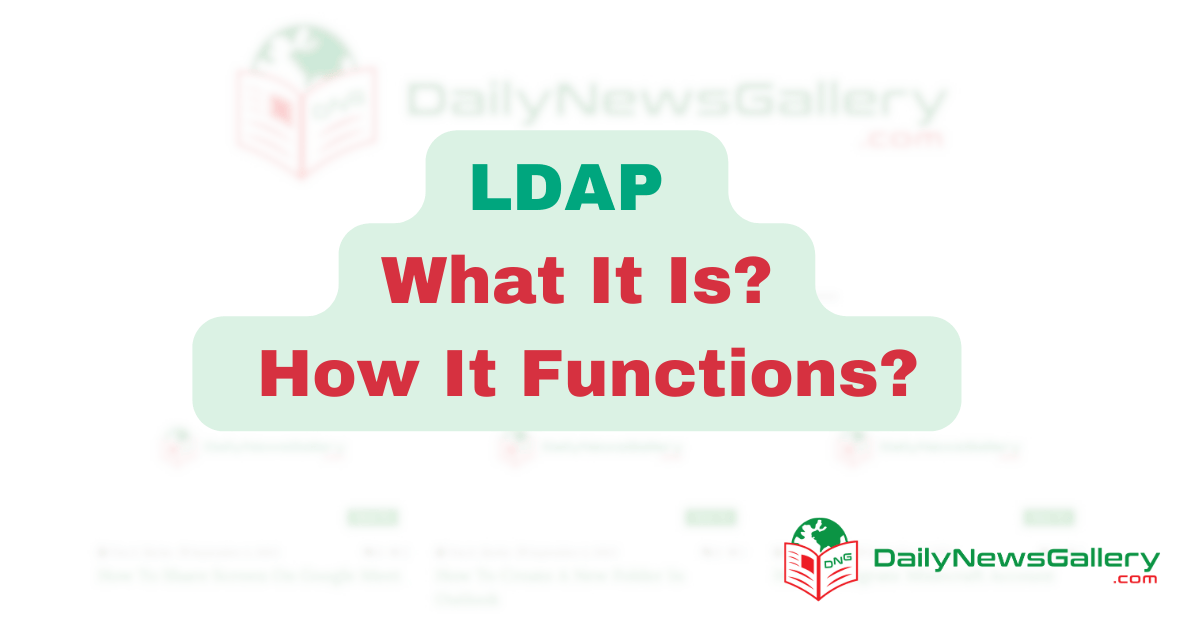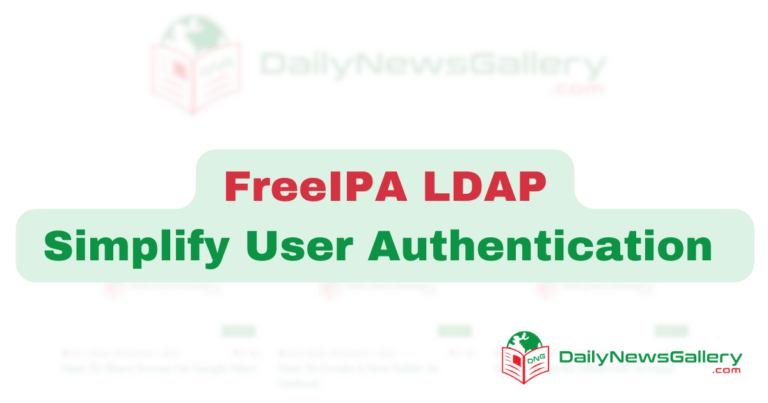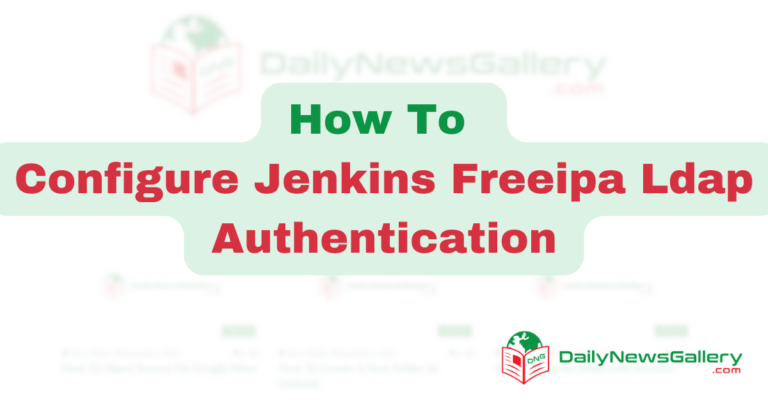
LDAP, which stands for Lightweight Directory Access Protocol, is a powerful and widely used protocol that allows for the management and access of directory information. In today’s interconnected world, where businesses and organizations rely heavily on data, having a reliable and efficient way to store, retrieve, and manage information is crucial. This is where LDAP comes into play.
Understanding the concept of directories
Before we delve into the specifics of LDAP, let’s first understand the concept of directories. In the context of computing, a directory is a hierarchical structure that organizes and stores information in a logical manner. It acts as a central repository for various types of data, such as user profiles, network resources, and organizational information.
Directories are designed to provide quick and efficient access to information. They allow for easy searching, retrieval, and modification of data. Think of directories as a digital version of a phone book, where you can find contact details for individuals or organizations.
What is LDAP and how does it work?
Now that we have a basic understanding of directories, let’s explore what LDAP is and how it works. LDAP is a protocol that was specifically designed for accessing and managing information within directories. It provides a standardized way for clients to communicate with directory servers.
At its core, LDAP follows a client-server model. The client, typically an application or a user, initiates requests to the server, which houses the directory. The server then processes these requests and returns the requested data to the client.
LDAP operates over a network, using TCP/IP (Transmission Control Protocol/Internet Protocol) as its underlying transport protocol. It utilizes a set of predefined operations to interact with the directory, such as searching for specific entries, adding new entries, modifying existing entries, and deleting entries.
LDAP Components And Architecture
To better understand how LDAP functions, let’s explore its components and architecture. LDAP consists of three main components: the client, the server, and the directory itself.
The client is responsible for initiating the communication with the server and issuing requests. It can be a standalone application or a built-in feature of an operating system. The server, on the other hand, is responsible for processing these requests and providing the requested information. The server is where the directory is stored and managed.
LDAP follows a distributed architecture, meaning that the directory can be spread across multiple servers. This allows for scalability, fault tolerance, and load balancing. The servers can communicate and synchronize with each other, ensuring that data remains consistent across the entire directory.
LDAP Data Model
Now that we have a grasp of LDAP’s architecture, let’s dive into its data model. The LDAP data model represents how information is organized and structured within the directory. It defines the types of objects that can be stored, the attributes associated with these objects, and the relationships between them.
In LDAP, data is organized in a hierarchical manner, similar to the way files are organized in a file system. The topmost entry in the hierarchy is called the root, and from there, the directory branches out into various levels of subentries. Each entry in the directory is uniquely identified by a distinguished name (DN), which consists of a series of attribute-value pairs.
LDAP uses a schema to define the structure and rules for the data stored in the directory. The schema specifies the types of objects that can be created, the attributes associated with these objects, and the syntax and constraints for each attribute. The schema ensures data integrity and consistency within the directory.
LDAP Directory Structure
Now that we understand the LDAP data model, let’s explore the directory structure in more detail. The LDAP directory structure is organized in a tree-like structure, with the root at the top and various branches and leaf nodes below.
Each node in the directory structure is called an entry and represents a specific object or entity. Entries can have attributes associated with them, which store the actual data. Entries can also have child entries, allowing for a hierarchical organization of data.
The directory structure is typically organized based on the needs of the organization or application. For example, in an organization, the directory structure can be organized by departments, with each department having its own branch in the tree.
LDAP Operations And Protocols
LDAP defines a set of operations and protocols for interacting with the directory. These operations allow clients to search for entries, add new entries, modify existing entries, and delete entries.
The most commonly used LDAP operation is the search operation, which allows clients to search for specific entries based on certain criteria. Clients can specify the search base, which defines the starting point for the search, and the search filter, which specifies the criteria for matching entries.
Other LDAP operations include add, modify, and delete. The add operation is used to create new entries in the directory, the modify operation is used to update existing entries, and the delete operation is used to remove entries from the directory.
LDAP Authentication and Security
LDAP provides authentication and security mechanisms to ensure that only authorized clients can access and modify the directory. When a client initiates a connection with an LDAP server, it needs to authenticate itself using a set of credentials, such as a username and password.
LDAP supports various authentication methods, including simple authentication, where the client sends the username and password in clear text, and secure authentication, which uses encryption to protect the credentials during transmission.
LDAP provides encryption mechanisms such as SSL (Secure Sockets Layer) and TLS (Transport Layer Security) to guarantee the confidentiality and integrity of data. These protocols encrypt the information shared between the client and server, thus preventing any unauthorized access or tampering.
Implementing LDAP in real-world scenarios
Now that we have explored the concepts and components of LDAP, let’s discuss how LDAP is implemented in real-world scenarios. LDAP has a wide range of applications and can be used in various industries and environments.
One common use case for LDAP is in the authentication and authorization of users. LDAP can be used as a central directory for user accounts, allowing users to authenticate themselves against the directory when accessing resources such as computer systems, email servers, or web applications.
LDAP is also commonly used in the management of network resources. It can store information about network devices, such as routers and switches, allowing administrators to easily retrieve and modify the configuration of these devices.
In addition, LDAP can be used for storing and managing organizational information, such as employee details, department structures, and contact information. This allows for easy access and retrieval of information within the organization.
LDAP vs. other directory services
LDAP is not the only directory service available today. There are other directory services, such as Active Directory (AD) and Novell eDirectory, that serve similar purposes. Let’s compare LDAP with some of these other directory services.
LDAP is known for its simplicity and lightweight nature, making it easy to implement and deploy. It has a smaller footprint compared to other directory services, making it suitable for resource-constrained environments.
On the other hand, directory services like Active Directory offer more advanced features and integration with other Microsoft products. Active Directory, for example, provides extensive support for Windows-based environments, including features like group policies and centralized management.
The choice between LDAP and other directory services depends on the specific requirements and environment of the organization. Each directory service has its own strengths and weaknesses, and organizations need to evaluate their needs and priorities before making a decision.
Best practices for LDAP implementation
Implementing LDAP requires careful planning and consideration. Here are some best practices to keep in mind when implementing LDAP:
- Design a clear directory structure: Plan the directory structure based on the needs of your organization. Consider factors such as departments, roles, and access control requirements.
- Define a comprehensive schema: Define a schema that accurately represents the data stored in the directory. Consider attributes, object classes, and attribute syntaxes that align with your organization’s needs.
- Implement appropriate access controls: Ensure that the directory is secure by implementing access controls. Limit access to sensitive information and configure appropriate permissions for users and groups.
- Regularly backup and monitor the directory: Regularly backup the directory to prevent data loss in case of hardware failures or other incidents. Monitor the directory for any issues or anomalies and take appropriate action.
- Stay updated with security patches and updates: Keep the LDAP server software up to date by applying security patches and updates. This helps protect against known vulnerabilities and ensures the stability and security of the directory.
By following these best practices, organizations can ensure a smooth and secure LDAP implementation that meets their needs and requirements.
Conclusion
LDAP is a powerful protocol that provides a standardized way to access and manage directory information. It offers a flexible and scalable solution for storing and retrieving data, making it a valuable tool for organizations of all sizes.
In this comprehensive guide, we have explored the concept of directories, the fundamentals of LDAP, its components and architecture, the LDAP data model, directory structure, operations and protocols, authentication and security mechanisms, real-world use cases, and the comparison with other directory services.
By understanding the intricacies of LDAP and following best practices for implementation, organizations can harness the full potential of this versatile protocol. Whether it’s for user authentication, network resource management, or organizational information storage, LDAP proves to be an essential tool in today’s data-driven world.
So, what are you waiting for? Take the first step towards leveraging the power of LDAP and unlock new possibilities for your organization.


